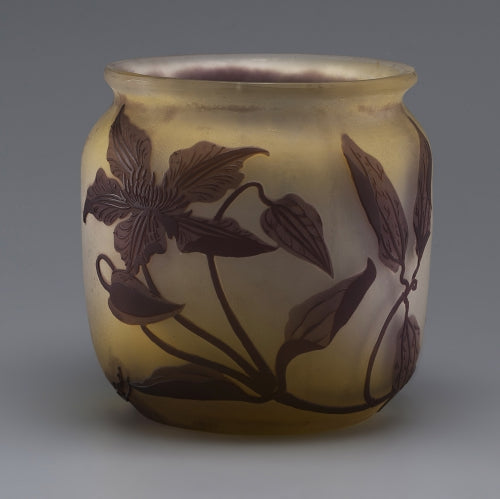
Gallé: Nature Captured in Glass and Light
Share
When the conversation turns to Art Nouveau, one name glows as vividly as the iridescent glass he shaped—Émile Gallé. Artist, botanist, innovator—Gallé was not merely a craftsman but a visionary who blurred the line between nature and art. His glassworks are not just objects; they are poems sculpted in translucent hues, whispers of forests, petals, and the poetry of the natural world.
The Artist and His Vision
Born in 1846 in Nancy, France, Émile Gallé was raised in a family already engaged in ceramics and glass. But Gallé was more than an heir—he was an alchemist of aesthetics. Deeply inspired by botany, literature, and Japanese art, he brought a philosophical and scientific eye to his creations.
Gallé studied in Germany and traveled extensively, absorbing ideas from different cultures. He returned to Nancy with a mission: to elevate glass and decorative arts to the realm of fine art. By the 1880s, he had taken over his father’s factory and turned it into a creative powerhouse.

Nature, Symbolism, and the Soul of Glass
Gallé’s work was rooted in the natural world. His vases, lamps, and furniture featured delicately etched orchids, dragonflies, thistles, and water lilies—not merely as decoration, but as symbols loaded with meaning. He used layered glass (cameo glass), acid-etching, enameling, and engraving techniques to create dreamlike landscapes and flora that seemed to breathe.
Every piece felt like a meditation—on life, decay, metamorphosis. To Gallé, glass was alive, responsive to light and shadow, just as a flower is to the sun.
“My roots are in the depths of the woods,” he once said.
A quote that beautifully encapsulates both his artistic identity and his deep ecological sensitivity.
The Nancy School and Art Nouveau
Gallé was a leading figure of the École de Nancy, a collective of artists and artisans who championed Art Nouveau as a total style that spanned architecture, furniture, and decorative arts. Their ethos: bring beauty into everyday life and draw inspiration from nature’s elegance and asymmetry.
His work gained international acclaim, especially after the 1889 Exposition Universelle in Paris, where he emerged as a central figure in the Art Nouveau movement. His innovative use of glass elevated the medium to an art form, influencing generations to come.
Collecting Gallé Today
Original Gallé pieces—particularly those signed and from the master’s lifetime—are highly sought after by collectors. His cameo glass vases and lamps, with their layered colors and rich botanical themes, are prized for both their artistic and historical value.
Certain features to look for:
Signature: Often acid-etched or engraved—some pieces marked “Gallé” with a star signify posthumous production (still collectible, but less rare).
Technique: True cameo glass involves multiple layers and intricate carving or etching.
Themes: Nature, literature, and orientalism dominate Gallé's iconography.
Whether displayed under soft light or examined closely for their fine detailing, Gallé pieces possess a unique vitality that continues to captivate.
Legacy and Luminescence
Émile Gallé passed away in 1904, but his legacy glows on—in museum collections, prestigious auctions, and the homes of those who appreciate the fine interplay of nature and design. In a time when industrialization was reshaping the world, Gallé reminded us to slow down and look closely at a leaf, a blossom, a beam of light refracted through colored glass.
More than a master of material, Gallé was a poet of beauty—his work a quiet resistance to a world growing louder.
This week, we invite you to step into the delicate, luminous world of Émile Gallé in our latest Journal. Discover how glass, in the hands of a dreamer, becomes more than art—it becomes emotion.
Explore more in our Fine Art Collection




